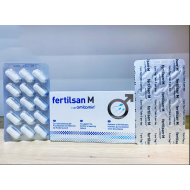
Tomide 2.5 mg Tab
Tk2
- Stock: In Stock
- Brand: Acme Laboratories Limited
- Product ID: Torasemide
0 Pcs sold
3332 Interested
100% Secure Payment

Indications
Torasemide is indicated for the management of edema of cardiac, renal and hepatic origin.The management of hypertension, as a sole therapeutic agent or in combination with other classes of antihypertensive agents.
Pharmacology
Torasemide inhibits the Na+/K+/2CI– carrier system (via interference of the chloride binding site) in the lumen of the thick ascending portion of the loop of Henle, resulting in a decrease in reabsorption of sodium and chloride. This results in an increase in the rate of delivery of tubular fluid and electrolytes to the distal sites of hydrogen and potassium ion secretion, while plasma volume contraction increases aldosterone production. The increased delivery and high aldosterone levels promote sodium reabsorption at the distal tubules, and By increasing the delivery of sodium to the distal renal tubule, torasemide indirectly increases potassium excretion via the sodium-potassium exchange mechanism. Torasemide’s effects in other segments of the nephron have not been demonstrated. Thus torasemide increases the urinary excretion of sodium, chloride, and water, but it does not significantly alter glomerular filtration rate, renal plasma flow, or acid-base balance. Torasemide’s effects as a antihypertensive are due to its diuretic actions. By reducing extracellular and plasma fluid volume, blood pressure is reduced temporarily, and cardiac output also decreases.
Dosage & Administration
Congestive heart failure: The usual initial oral dose is 10 mg or 20 mg once daily. If the diuretic response is inadequate, the dose should be titrated upward by approximately doubling until the desired diuretic response is obtained. Single doses higher than 200 mg have not been adequately studied.
Chronic renal failure: The usual initial oral dose is 20 mg once daily. lf the diuretic response is inadequate, the dose should be titrated upward by approximately doubling until the desired diuretic response is obtained. Single doses higher than 200mg have not been adequately studied.
Hepatic cirrhosis: The usual initial oral dose is 5 mg or 10 mg once daily, administered together with an aldosterone antagonist or a potassium sparing diuretic. If the diuretic response is inadequate, the dose should be titrated upward by approximately doubling until the desired diuretic response is obtained. Single doses higher than 40 mg have not been adequately studied. Chronic use of any diuretic in hepatic disease has not been studied in adequate and well-controlled trials.
Hypertension: The usual initial oral dose is 2.5-5 mg once daily. If the 5 mg dose does not provide adequate reduction of blood pressure within 4 to 6 weeks, the dose may be increased to 10 mg once daily. If the response to 10 mg is insufficient, an additional antihypertensive should be added to the treatment regimen.
Interaction
Increased risk of severe hypokalaemia with amphotercin B, corticosteroids, carbenoxolone, hypokalaemia-causing medications. Increased risk of lithium toxicity. Increased potential for ototoxicity and nephrotoxicity with nephrotoxic or ototoxic medications e.g. aminoglycosides. High dose salicylates may increase the risk of salicylate toxicity. Increased risk of toxicity with digoxin. Reduced diuretic effect with NSAIDs. Increased risk of hypotension with antihypertensives.
Contraindications
Torasemide is contraindicated in patients with known hypersensitivity to torasemide and other sulfonyl ureas. It is also contraindicated in patients who are anuric.
Side Effects
Usually torasemide is well tolerated. However, a few side effects like dry mouth, dizziness, tiredness, skin rash, diarrhea, constipation, nausea, vomiting, orthostatic hypotention and muscle cramp may occur. All side effects usually are mild and transient.
Pregnancy & Lactation
Pregnancy: Adequate and well controlled studies of torasemide have not been carried out in pregnant woman. Because animal reproduction studies are not always predictive of human response, torasemide can be used during pregnancy only if clearly needed.
Nursing Mother: lt is not known whether torasemide is excreted in human milk. Because many drugs are excreted in human milk, caution should be exercised when torasemide is administered to a nursing mother.
Precautions
Precautions should be taken while torasemide is administered in the conditions like diabetes, gout, hypotension and liver failure.
Overdose Effects
There is no human experience of overdoses of torasemide, but the signs and symptoms of overdosage can be anticipated to be those of excessive pharmacological effect: dehydration, hypovolemia, hypotension and hypokalemia. Treatment of overdose should consist of fluid and electrolyte supplement.






















%20Pvt.%20Ltd./Movicol-Oral-Powder-190x190.jpg)
